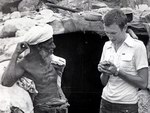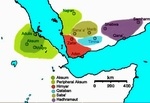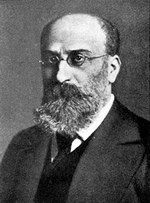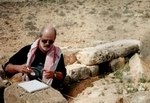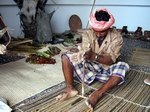Search tags
"Our mission is to document the presence of rock art located in the depths of Dahaisi cave using the latest photographic techniques. We are hoping they will help us uncover and study the animal and human figures, crosses, and strange array of geometric patterns that adorn the walls of the final chamber."
A group of Russian linguists under the direction of a correspondent of RAS, Director of the Institute of Oriental Studies Vitaly Naumkin developed a writing system for the archaic language of the Yemeni island of Socotra. The indigenous population of Socotra speaks a dialect of the local Socotra unwritten language, related to the modern Semitic Modern South Arabian languages, as well as in Arabic.
This Soqotran tale was recorded from Fatima Salim Sho'o (ca. 19) near her family small cave at Mauna Mountain in the north-western Muri area of Soqotra island just near the airfield and the camp in 1980. Her father Salim ‘Abdella Sho'o, her mother Maryam Keshen, and both of her brothers Sa’id and Sa’ad were also there. Fatima, a young clever Bedouin woman, never went to school. Here is a beginning of the tale which is very close to the famous Egyptian tale of Two Brothers from the d'Orbiney papirus.
One day Ali the Clever One was wondering. And he was wondering if he is not as good as other people? Other people who came to the Sultan, gave him good presents. But he, Ali, surely he was also good so he decided to treat the Sultan.
One day Ali the Clever One decided to try his hand at agriculture. He found a piece of land, cleared it of stones and brush-wood, dug the earth and made a kitchen garden. After a little time his kitchen garden began to grow, now he had only to water it and to wait for a harvest. But that didn’t happen.
One night a young fellow slept and had a dream that he married a Sultan's daughter. In the morning he told his friends about the dream, they told their friends about the dream and finally the Sultan knew about the dream. The Sultan became very angry. "Take him to jail!" he ordered his servants and they carried out his order immediately...
New materials from Vladimir Agafonov - chronology of Socotra island and two Socotran fairy-tales, one of them you can listen to Socotri.
There were two friends. One day one of them said: “Hey, brother! Do you want (us) to go for a walk?! To that place on this plain?!” “Yes, I do”, this friend said. They went. When they went the strong wind came and the whole place disappeared...
Once upon a time there was a girl. Her parents died when she was very small so she went to stay with an old man and his wife who would look after her. The old man was a fisherman, but his catch of fish was small - just enough for them not to die from hunger. His wife was very angry, aggressive and very noisy. The girl lived with them but was worried because the old man and his wife didn't love her and that is why she was named Mehazelo, the unloved, by the neighbours.
A Letter to The International Conference «Yemen: Bridging the Gap between the Past and Present»
The most beautiful postal stamps issued for the Mahra Sultanate of Qishn and Socotra were the stamps devoted to Arab culture and folklore.
Early November Vladimir Melnik came again to Socotra to make a film about Socotra’s old men whose lifestyle pattern has not practically changed for the recent decades.
Guido Adler was the first one in studying Socotran folk music.
The United Nations Children's Fund continued financing development of formal education on the Yemeni Socotra Archipelago, which was initiated in 2007. At the end of 2008 68 Socotra’s schools were equipped with school and office furniture and schoolchildren were given schoolbags with a full set of writing implements.
On Socotra, Yemen’s remote island, there were discovered the stone implements moving the history of the island almost one million years away. Previously, most researchers reckoned that this big island located near the Horn of Africa had been settled not so long ago.
For an Adenese-Socotran expedition, in 1960 there were issued special postage stamps.
English scientist Brian Lougery states that it was Socotra where a Shakespeare’s play was put on for the first time in the Arab world!
The most interesting thing of the museum is a set for fire-making. If you ask a museum attendant to show you how to make a fire he will easily do it in couple of minutes.
Some theorists of literature consider Socotra to be the prototype of Prospero Island mentioned in Shakespeare's play «The Tempest».
Two men loved each other - because the men were brothers. One day one of them said to the other: - Brother, do you know what will separate us? - What? - the other said. - Woman's work,- the first said. - Woman's work? It's impossible!- his brother said." Fatima Salim, who is telling me this oldest tale, doesn't stop sewing and the voice of her sewing machine accompanies the story. Fatima, who never went to school in her life, is sitting on the entrance of her family's cave. She doesn't know that a story like this one - about the two brothers and the dishonest wife of one of them - was once recorded in ancient Egypt over 3000 years ago for the Crown Prince Seti and is kept now as a great value in the Papiry collection of the British Museum.




